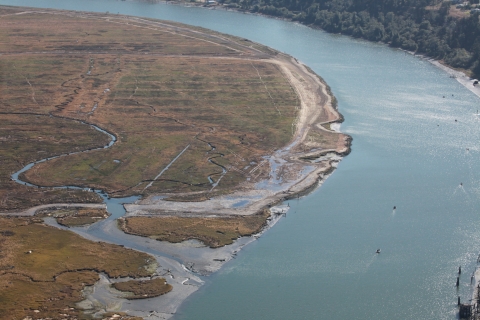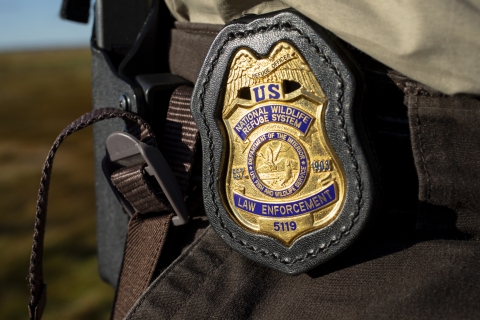What We Do
The U.S. Fish and Wildlife Service conserves and monitors plants and animals, manages and restores habitat, and provides outdoor recreation for the public at the nation’s more than 550 National Wildlife Refuges.
The coastal Refuges offer unique opportunities to study plants and animals in pristine or relatively undisturbed habitats. These field studies seek to answer questions ranging from the needs of a single species to how an entire ecosystem functions.
Management and Conservation
Refuges deploy a host of scientifically sound management tools to address biological challenges. These tools span active water management to wilderness character monitoring, all aimed at ensuring a balanced conservation approach to benefit both wildlife and people.
Comprehensive Conservation Plan
In accordance with the National Wildlife Refuge System Administration Act and the Wilderness Act, a Comprehensive Conservation Plan (CCP) was finalized for Bandon Marsh National Wildlife Refuge by the U.S. Fish and Wildlife Service's Oregon Coast National Wildlife Refuge Complex in 2013. The full CCP is accessible online on ServCat (https://ecos.fws.gov/ServCat/DownloadFile/43698).
The purpose of the CCP is to map a vision of the refuges' future desired conditions, addressing issues of land protection, public use, types of habitat to be provided, partnership opportunities, and the management actions needed to achieve this vision. This CCP specifies a management direction for the Refuge for 15 years.
Bandon Marsh NWR is in the process of developing an Inventory and Monitoring Plan to monitor Refuge resources, as well as developing a plan for management of invasive species invasive species
An invasive species is any plant or animal that has spread or been introduced into a new area where they are, or could, cause harm to the environment, economy, or human, animal, or plant health. Their unwelcome presence can destroy ecosystems and cost millions of dollars.
Learn more about invasive species .
Our Projects and Research
Biological Investigations
Many land management objectives occur at scales that can be challenging to grasp from ground level. A good aerial photograph is worth thousands of words when conveying the big picture perspective of how all the pieces of a landscape fit together.
The coastal refuges offer unique opportunities to study plants and animals in pristine or relatively undisturbed habitats. These field studies seek to answer questions ranging from the needs of a single species to how an entire ecosystem functions.
Biologists conduct innovative research in many coastal habitats, including marshes and estuaries. At Bandon Marsh NWR, the removal of dikes brought back the influence of daily tidal cycles and restored the natural hydrology of the marsh, providing ample opportunity for research.
Law Enforcement
U.S. Fish and Wildlife Service law enforcement officers have a wide variety of duties and responsibilities. Officers help visitors understand and obey wildlife protection laws. They work closely with state and local government offices to enforce federal, state and refuge hunting regulations that protect migratory birds and other game species from illegal take and preserve legitimate hunting opportunities.
Laws and Regulations
There are a number of federal laws and regulations that guide the U.S. Fish and Wildlife Service’s efforts and goals for our National Wildlife Refuges.




